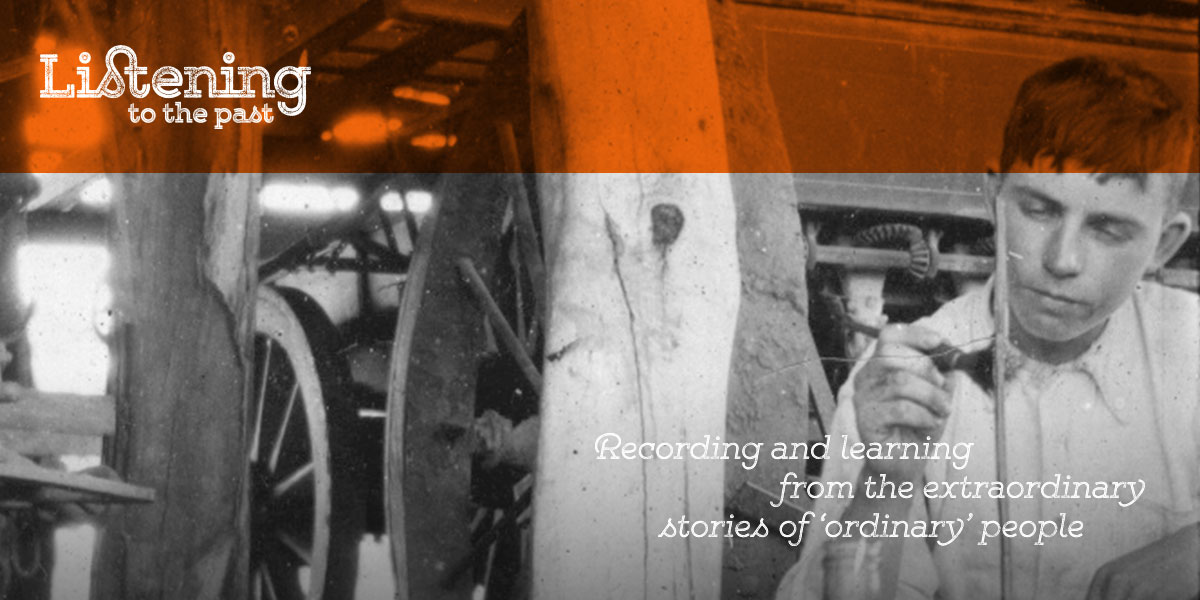Aeolian instruments are instruments that are ‘played’ by the wind. They have fascinated humans for centuries.
In modern times, many beautiful sculptures around the world have been designed to produce music. True Aeolian instruments produce notes that vary according to the wind speed. As the wind speed goes up or down, the pitch eerily goes up and down.
Sometimes however, man-made structures create unintended wind instruments, as the wind sets up vibrations inside metal pipes. Professor Trevor Cox explains here why metal railings, for example, can whistle in the wind. These ‘wind instruments’ produce discrete notes, just as a flute does, rather than the sliding pitches of Aeolian instruments.

Woomera Chronograph Station and telegraph poles, 1949. From the collection of the National Archives of Australia: NAA: D874, NB59.
‘Whistling Willies’ in Woomera
I recently had the pleasure of interviewing people who lived and worked at Woomera, a town located in desert country 446 km north of Adelaide, in South Australia. When Terry Clark first arrived in the town on a hot, dusty, windy day, he was greeted by an unexpected wind instrument: the eerie sound of the wind through the metal telegraph poles. He describes it here:
Well in ’61, the entrance was via what they used to call the [Ponds] Gate, and it was very, very spooky, because it was hot, it was dusty, it was September, it was hot – late September – it was hot, it was dusty, it was windy. And the telegraph poles they had carrying wires around the place were a tube – a metal tube – tapered so they could all fit in to each other for transport reasons, and they had holes in them to lighten the weight. And the wind would be blowing and literally playing tunes as the wind… so you’d come to this place, it’s total desert, and that was something for someone who’d grown up in London – all of a sudden there’s this desert, there’s the dust, there’s the wind, and there’s the ‘Whistling Willies’ we used to call them. They were the telegraph poles with the wind blowing through them. It was eerie, I think that’s probably … – in a word, it was eerie – with the whistling and the dust and the heat and nothing around.”
Unfortunately, I don’t have a recording of the sound of the wind through the telegraph poles. It may have sounded similar to the wind blowing through holes in metal tubes in an observation tower in Germany, which you can listen to here.
Wind-generated sounds
The wind can cause a range of sounds by blowing through tubes with holes (similar to a flute) or as a consequence of air vortices and pressure changes produced as the air flows past man-made objects such as power lines (Aeolian tones). In the blog, Sounds Like Noise, you can hear the effect of wind causing electrical wires to vibrate, or vibrations in an electricity pylon. The sound has been recorded with contact microphones, and would not otherwise be audible.
If you’d like to know more about how wind can generate these sounds, there are some fascinating articles here and here.
Have you ever encountered interesting musical effects such as the Whistling Willies at Woomera? It would be wonderful to hear about your experience in the comments below!
You can read more stories about life in Woomera here.
Quote from oral history interview with Terry Clark for the Life in Woomera Oral History Project, courtesy of the State Library of South Australia (OH 1123/4).
